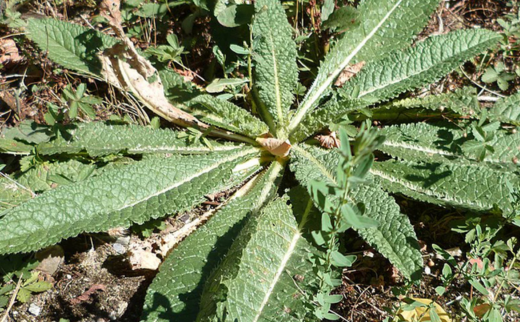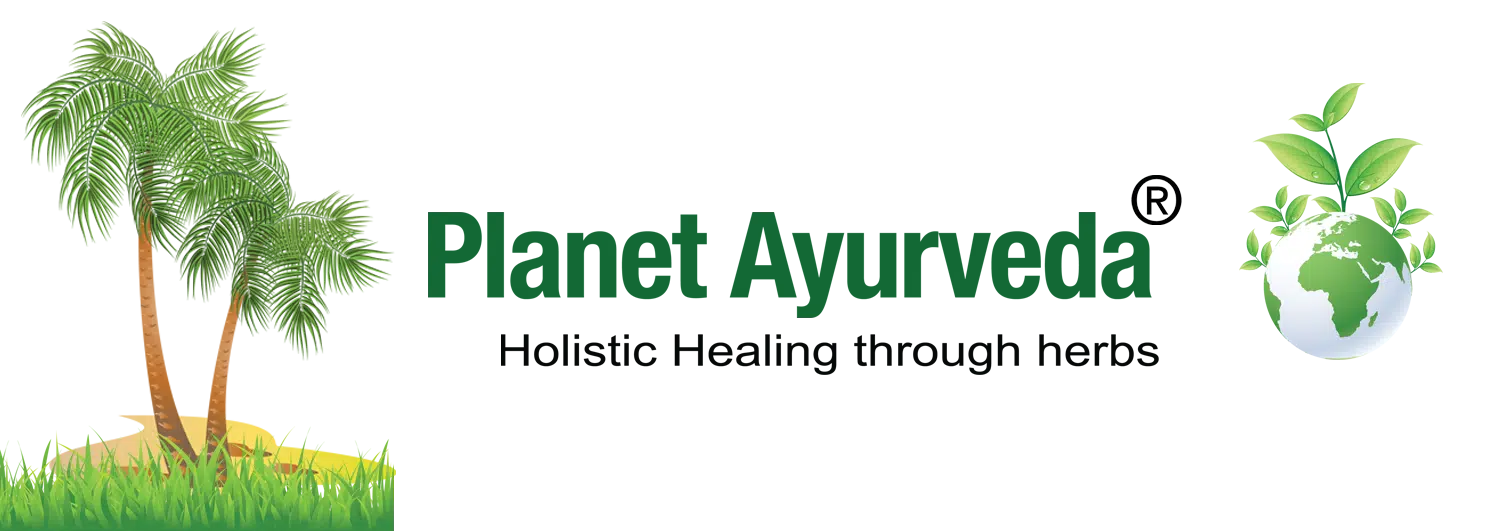Gojihva/ Onosma bracteatum Wall./ Cow’s Tongue – Ayurvedic Uses, Benefits, Dosage & Therapeutic Actions
Abstract
Onosma bracteatum Wall., commonly referred to as Ratanjot, is a valuable medicinal herb known for its potent cooling, anti-inflammatory and demulcent properties. It is widely used in Unani and Ayurvedic medicine. It is especially beneficial in managing respiratory disorders, skin problems, fevers, and urinary tract infections. In Ayurveda, Gojihva is recognized both as a Shaaka (vegetable) and as a medicinal herb used in the management of various ailments. According to the Ayurvedic Pharmacopoeia of India, the official botanical source of Gojihva is Onosma bracteatum Wall. However, in contemporary practice, several other plant species are also considered as sources of Gojihva by various scholars. These include Caccinia glauca Savi, Trichodesma indicum R.Br., Elephantopus scaber L., and species of Launaea, particularly Launaea nudicaulis (L.) Hook.f.

Introduction
Onosma bracteatum Wall. belongs to the family Boraginaceae and is traditionally used for its mucilaginous and refrigerant actions. This herb is predominantly used in decoction form and included in several classical formulations for treating burning sensations, cough, fever, and hematuria. Its pleasant color and therapeutic nature also make it an ingredient in oils and pastes for external application. Indigenous systems of medicine regard this herb as a natural coolant, especially effective during summer-related ailments and Pitta disorders. The herb acts as a natural blood purifier and is often included in formulations for cooling and soothing the body. It holds a significant place in traditional medicine due to its versatility and minimal side effects.
Scientific Classification
- Kingdom – Plantae
- Order – Boraginales
- Family – Boraginaceae
- Genus – Onosma
- Species – Onosma bracteatum Wall.
Synonyms
- Kharaparnini / Kharapatra – The plant with rough leaves
- Matsyagandhi – Emits a fishy odour when crushed
- Darpapatri – Possesses thick leaves
- Godhumika – Refers to its resemblance with wheat (Godhuma) in appearance
- Koshtamulika – Indicates its use in abdominal or gastrointestinal disorders
- Goli – Referring to its rounded leaves or shape
- Gojika / Gojihva – Means “cow’s tongue”, describing the shape and texture of the leaves
- Darvika
- Gobhi
Vernacular Names
- Hindi – Goaza, Ganjaba, Goziya
- English – Cow’s tongue, Lisanussoar, Sedge herb
- Arabic – Taharatulsanulshur, Lasanulshur
- Bengali – Gaozaban, Dadishaka
- Gujarati – Bhopathsri
- Kannada – Yettina Nalage
- Marathi – Pathari
- Parsi – Kalamarumi
- Telugu – Yedunalaka chattu
- Urdu – Gaozaban
- Sanskrit – Darvipatra, Gauajihva, Kharaparni, Gauji
- Assamese – Lisanusaur
- Malayalam – Kozhuppu
- Odia – Kharsan, Kharaptra
- Punjabi – Kazban
- Tamil – Kharaptra, Dharviptra, Kozha
Habitat
The plant thrives in well-drained, light soils and is typically found on sun-facing slopes of the Western and Central Himalayas, ranging from Kashmir to Kumaon at altitudes between 3500 to 4500 meters. In Himachal Pradesh, it is commonly observed in the districts of Kangra, Chamba, Kinnaur, and Lahaul-Spiti.
Morphology
Onosma bracteatum is a large, herbaceous perennial shrub that grows up to 40 cm in height. It has a simple, hairy stem arising from a cluster of radical leaves and a black woody rootstock, 2.5–5 cm in diameter, ending in a knotty head that gives rise to multiple erect or ascending stems. The stem is greenish-yellow, rough due to white, hispid hairs, and marked by longitudinal wrinkles and cicatrices. Its root is purplish-red internally, while the stem is rarely branched and covered with calcareous tubercles and bristles. The leaves are thick, petiolate, lanceolate to ovate-lanceolate, and measure 12–30 cm in length. Both surfaces of the leaves bear tubercle-based hispid hairs—greenish-yellow on top and white underneath. Lower leaves are stalked and bristly, while upper ones are smaller. The plant bears deep blue, trumpet-shaped flowers that later turn purplish, arranged in silky clusters, and densely covered with white bristles. The fruit consists of ovoid, rough nutlets.
Classical Categorisation
- According to Charaka Samhita – Shaka Varga
- According to Vagbhata – Shaka Varga
- According to Bhavaprakasha Nighantu – Guduchyadi Varga
- According to Kaiyadeva Nighantu – Oushadhi Varga
Ancient Verses
गोजिह्वा वातला शीता ग्राहिणी कफपित्तनुत् ॥
हृद्या प्रमेहकासास्त्रव्रणज्वरहरी लघुः ।
कोमला तुवरा तिक्ता स्वादुपाकरसा स्मृता ॥
According to the above shloka, Gojihva has bitter, astringent, and sweet taste, cold potency, light in nature, and balances Kapha and Pitta dosha. It is absorbent in nature. It is effective in the management of heart diseases, diabetes, cough, bleeding disorders, wound healing, and fever. It has a sweet post-digestion effect.
Ayurvedic Properties
- Taste (Rasa) – Bitter (Tikta), Astringent (Kashaya), Sweet (Madhur)
- Physical property (Guna) – Light (Laghu)
- Potency (Veerya) – Cold (Sheet)
- Post-digestion effect (Vipaka) – Sweet (Madhur)
- Effect on Tridosha – Balances Pitta and Kapha
Therapeutic Properties
- Cardiotonic
- Antidiabetic
- Antitussive
- Antipyretic
- Absorbent
- Anti-asthmatic
- Antitoxic
- Dental health support
- Anti-inflammatory
- Wound healing
- Blood purifier
- Antileprotic
- Diuretic
- Hepatoprotective
- Anticancer
- Anxiolytic
- Cardiac and smooth muscle relaxant
- Anti-ageing
Systemic Actions
External Uses
- Helps relieve pain and burning sensations and promotes faster wound healing
Internal Uses
- Nervous System – Strengthens the nervous system and is beneficial in managing mental health conditions
- Digestive System – Useful in constipation and jaundice, and aids in regulating Vata movement. It exhibits mild laxative properties
- Circulatory System – Supportive in conditions like Amavata (rheumatic affections) and cardiac debility
- Respiratory System – Balances Kapha dosha and is helpful in cough, asthma, dyspnea, and nasal discharge. Decoction with licorice is useful for cold and congestion
- Excretory System – Acts as a diuretic and is indicated in painful urination, pus in urine, and urinary tract discomfort
- Satmikarana (Rejuvenation) – Enhances overall vitality and is effective in general weakness and debility
- Tapakrama (Fever Management) – Reduces fever, quenches excessive thirst, and soothes burning sensations
Chemical Composition
- Benzoquinone derivatives such as Ehretiquinones B–D, Allomicrophyllone, and Ehretiquinone
- Newly identified compounds: Pulmonarioside C, 9′-Methoxyl salvianolic acid R, (-)-4-O-(E)-p-coumaroyl-L-threonic acid methyl ester
- Other phytoconstituents (totaling 34 compounds): Coumarins, Caffeic acid, rosmarinic acid, vanillic acid, p-Hydroxybenzoic acid analogs, Lignans, Glycosides, Shikonin and its derivatives
- Leaves contain unsaturated pyrrolizidine alkaloids like lycopsamine and supindine viridiflorate
- Contains potassium and calcium salts combined with mineral acids
- Stems and leaves are rich in saline mucilage, contributing to their invigorating nature
- Flowers contain cholin, glucose, fructose, amino acids, and tannins
- Seeds are a source of protein and oil, rich in gamma-linolenic acid (GLA) and linoleic acid
Modern Overview
Cardioprotective Activity
Onosma bracteatum Wall., a revered herb in Unani and Ayurvedic systems, exhibits significant cardioprotective and anti-inflammatory potential owing to its diverse phytoconstituents. Shikonin and its derivatives, a group of naphthoquinones, possess potent antioxidant properties that help reduce oxidative stress in myocardial tissue and inhibit inflammatory mediators like NF-κB and COX-2. The presence of phenolic acids (rosmarinic, caffeic, vanillic) and flavonoids such as kaempferol, rutin, and catechin further enhances its ability to neutralize free radicals, improve endothelial function, and prevent lipid peroxidation. Triterpenoids and selective pyrrolizidine alkaloids contribute mild anti-inflammatory and tissue-protective actions, supporting vascular and hepatic health. Pharmacological investigations also confirm its hepatoprotective, anti-asthmatic, and smooth muscle relaxant activities, suggesting a multifaceted role in managing cardiovascular, hepatic, and systemic inflammatory disorders.
Diuretic Activity
The methanolic extract of Onosma bracteatum has demonstrated significant diuretic activity in experimental studies, which is attributed to the synergistic action of its bioactive phytoconstituents. Phenolic compounds such as caffeic acid, rosmarinic acid, and p-hydroxybenzoic acid are known to enhance renal blood flow and promote natriuresis (Increased sodium excretion in urine), thereby increasing urine output. Coumarins and salvianolic acid exert mild vasodilatory effects on renal vasculature, improving glomerular filtration. Artitrichin, another compound present in the extract, may further facilitate water and electrolyte excretion. Moreover, the aqueous fraction of the plant contains appreciable levels of potassium salts, which can act as mild diuretics by reducing sodium reabsorption in renal tubules and enhancing the osmotic gradient. Collectively, these compounds contribute to the plant’s overall ability to support renal excretory function and fluid balance.
Practical Uses
- Leaf ash of Onosma bracteatum is applied topically for managing stomatitis and to promote wound healing.
- A decoction made from the leaves is traditionally used for treating jaundice and relieving constipation.
- Cold infusion of the leaves is administered in psychiatric disorders and epilepsy to calm the nervous system.
- Cold infusion prepared from the flowers and fruits, when combined with Glycyrrhiza glabra (licorice) powder, is given in a dose of 50–60 ml to alleviate rhinitis and cough.
- Leaf cold infusion also serves as a tonic, diuretic, and demulcent, widely prescribed in conditions like rheumatism, syphilis, leprosy, melancholic states, and renal ailments.
- A 30–40 ml dose of leaf decoction is recommended to reduce fever and ease painful or difficult urination.
- Decoction of the entire plant helps soothe functional heart palpitations and irritation in the stomach and urinary bladder.
- Root powder is applied externally to treat various skin eruptions and dermal conditions.
Part Used
- Leaves
- Flowers
Dosage
- Leaf powder – 4–6 gm with milk
- Flower powder – 3–6 gm
Planet Ayurvedic Medicines
Special Note
There is some difference of opinion among scholars about Gojihva. Some have considered Elephantopus scaber as Gojihva, but Shri Thakur Balwant Singh ji, on the basis of its local synonyms, has considered it as ‘Mayurshikha’ and not Gojihva. From this point of view, it has been described under Mayurshikha.
Acharya Priyavrat ji considers Gojihva as a vegetable and considers Goji to be a different Greek substance, Gavjavan. Bhavamishra has probably merged the two because Kharparnini, Darvi etc. draw attention towards Gavjavan and Goji towards the vegetable. Gavjavan has also been called different plants, the main among them is Caccinia glauca Savi, which is found in Balochistan and is balya, diuretic and lubricating in properties and is used in rheumatism and syphilis. The following substances are also referred to as Gavjavan, whose leaves are rough. These are usually of the Boraginaceae family:
- Borago officinalis Linn.
- Anchusa strigosa Lebill.
- Macrotomia benthami DC.
- Trichodesma indicum R. Br. – semi-flowered and branched (used in Kerala)
Conclusion
Onosma bracteatum (Ratanjot) is a potent herb with multifaceted benefits, especially in managing Pitta disorders, inflammatory conditions, and burning sensations. Its unique cooling and demulcent actions make it ideal for use in both internal and external treatments. With rising interest in herbal solutions and natural healing, Ratanjot continues to hold immense value in traditional and integrative healthcare systems. When used properly, it can be a gentle yet effective remedy for a variety of ailments.



